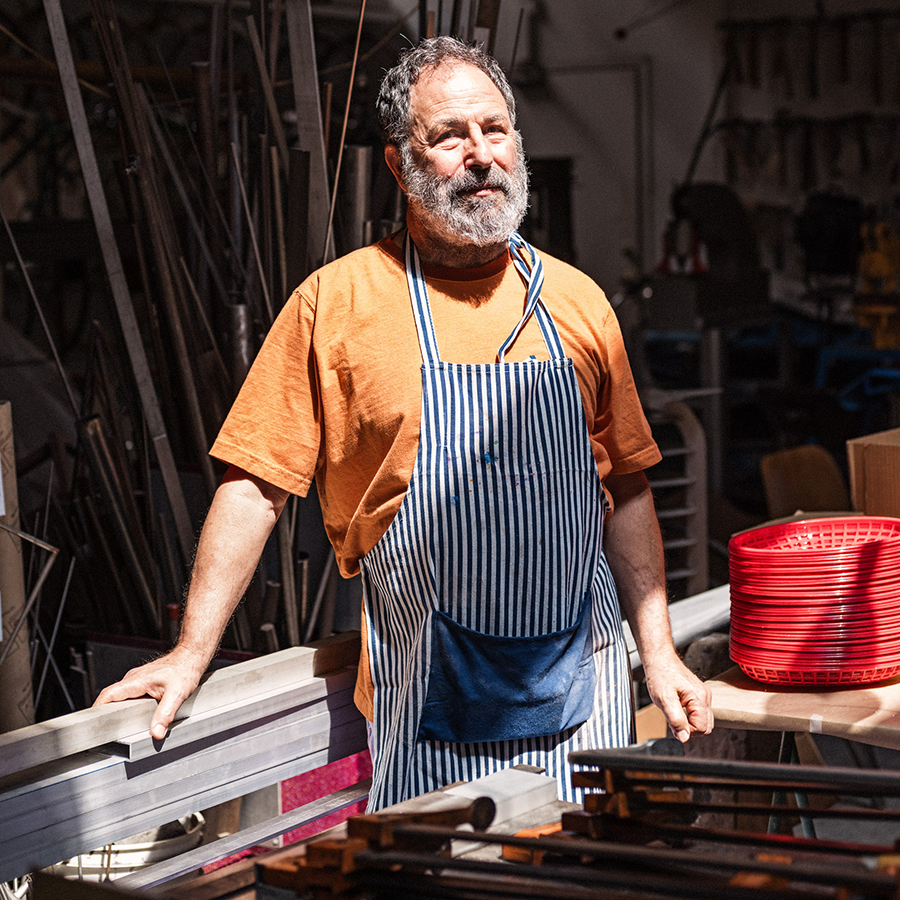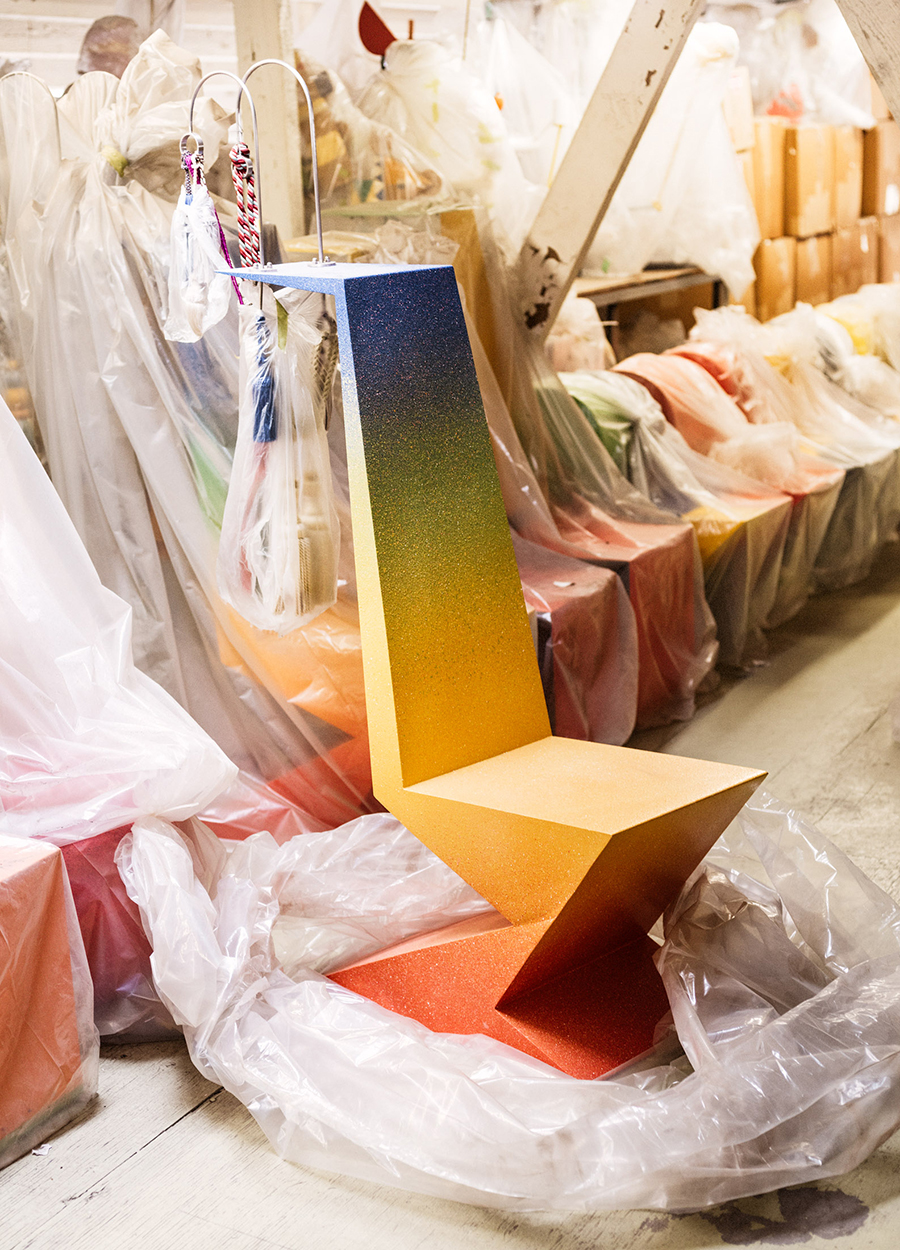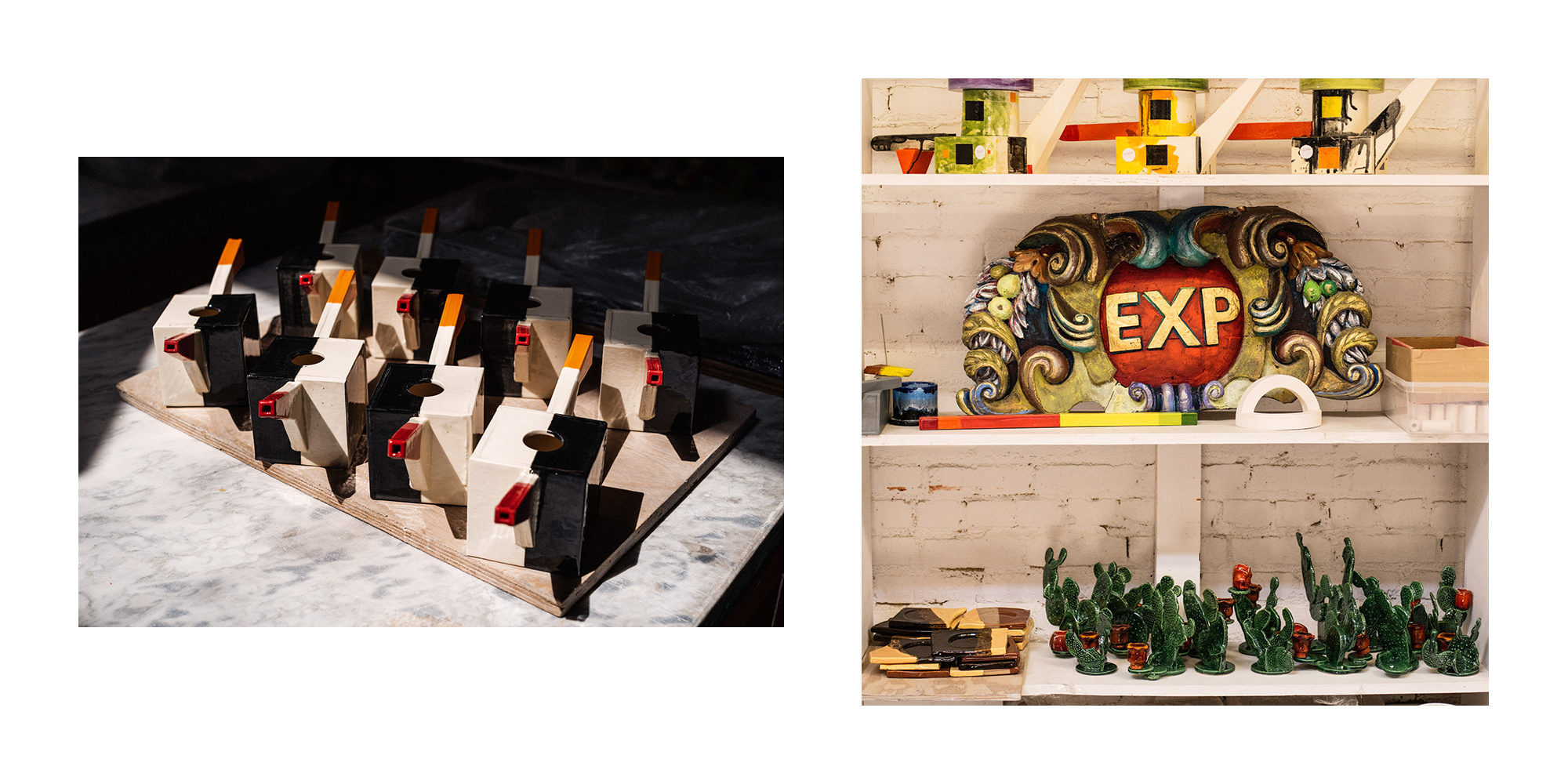Peter Shire’s work defies categorization. He admits that he often fields the questions: “Are you an artist? A potter? A designer?” Shire’s singular output embraces a Los Angeles ideology that encourages the transgression of artistic hierarchies. “It confuses people,” he says, “but I find it very simple.” Predictably, he has a complicated relationship with the business of art. As he puts it, “I always shudder to call my work a ‘practice,’ which is a fairly recent term.”
One of the original members of the 1980s Milan-based Memphis Group, Shire’s distinctive perspective can be traced back to his upbringing in the Echo Park neighborhood of L.A. His parents were Marxist-leaning—he has memories of their home being surveilled by the FBI—and they had working-class sympathies. But they weren’t “strictly working class,” he says. Shire’s Russian Jewish grandfather was a cabinetmaker who learned the trade in a U.K. guild, and his father was an autodidact intellectual who trained as an artist.
His parents and their friends sought a “better standard of living,” one that combined art and the everyday. Shire, who studied at the Chouinard Art Institute (today CalArts), has a similar desire: to bring as many people as possible into the world of art and design. His works are charged with an energy that goes beyond their function, often incorporating formerly utilitarian items. Through his Echo Park Pottery—an accessible “diffusion line,” as it would be described in the fashion world—he hopes to raise people’s expectations of functional objects.
An exhibition of Shire’s work, on view from April 22 through July 2 at MOCA Pacific Design Center in L.A., helps give context to his multifarious output. The show features work from the 1970s through the present, including his famed Bel Air chair (1982), as well as a selection of his drawings. All the objects on display—tables, lamps, chairs, teapots, ceramics—are functional (or in the case of the teapots, what Shire calls “function-illusions”), even the piece that looks like a lifeguard tower with rabbit ears. “It’s a big symbol for me: the guardian, the safe passage, the fair play, the umpire,” he says.
For Shire, the show is a turning point. He has created prominent projects for the 1984 Los Angeles Olympics, has pieces in the permanent collections of institutions around the world, and has been the focus of recent exhibitions at the Santa Monica Museum of Art (now the Institute of Contemporary Art Los Angeles) and L.A.’s A+D Architecture and Design Museum, yet his work has mainly been known just to insiders. Only recently has he begun appearing in galleries internationally—a trend that’s likely to accelerate after the MOCA presentation.
As Shire jokes, “One of the reasons we called the [MOCA] exhibition ‘Naked Is the Best Disguise’ is that I’ve always been right here.”
In this column, we ask our special projects editor, Bettina Korek, founder of the Los Angeles-based independent arts organization For Your Art, to select something in the world that she believes you should be aware of at this moment.



